It seems we can’t find what you’re looking for. Perhaps searching can help.
Sign Up for newsletter!
Subscribe to get the latest eBook!
Hotline






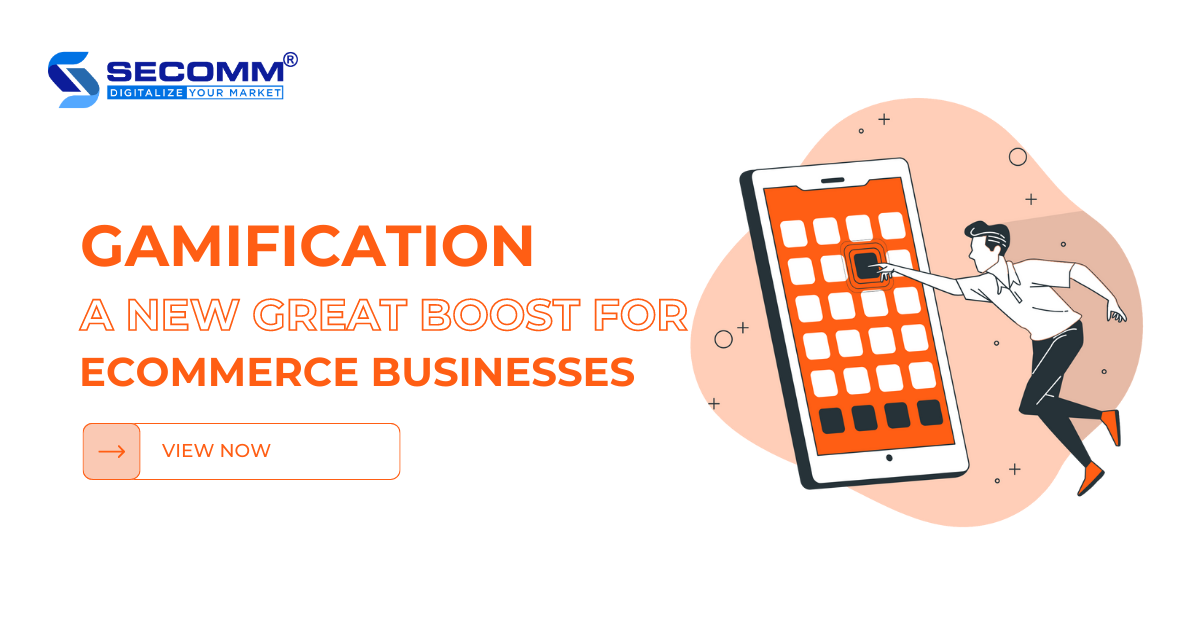
According to Research and Markets, the global gamification market was valued at over 10 million USD in 2020 and is expected to reach more than 38 million USD by 2026.
Gamification is a creative marketing strategy that has recently grabbed the attention of eCommerce business owners who are looking for ways to enhance customer engagement and achieve sales targets. In this article, we will discuss the ways Gamification empowers eCommerce.
Gamification hay trò chơi điện tử ứng dụng hoá, gọi tắt là Game hoá là thuật ngữ chỉ việc lồng ghép khéo léo cơ chế của trò chơi điện tử vào hoạt động marketing một cách sáng tạo, ấn tượng nhằm đạt được mục tiêu marketing đã đề ra.
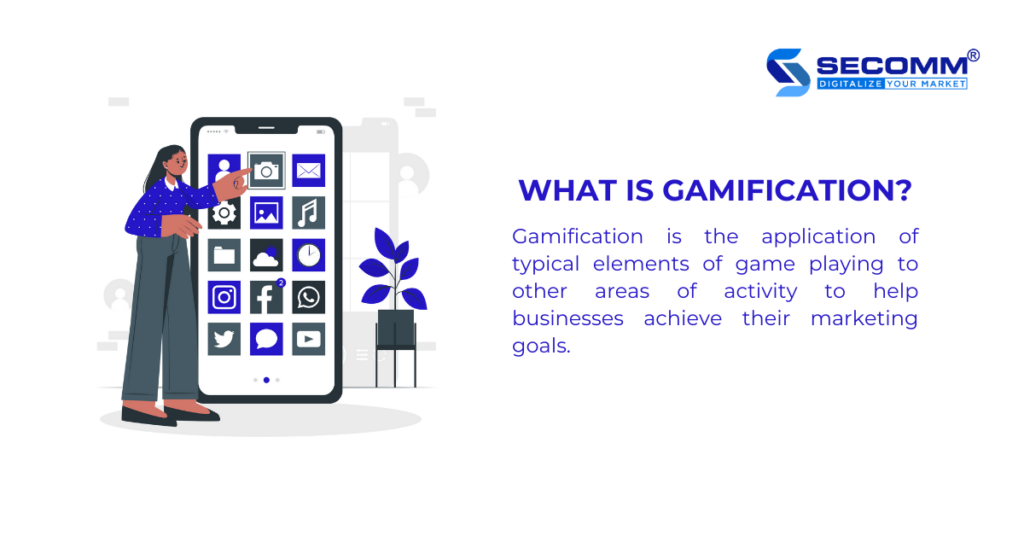
Gamification is the application of typical elements of game playing to other areas of activity to help businesses achieve their marketing goals.
Gamification emphasizes entertainment, making it a fantastic tactic for boosting brand loyalty and encouraging engagement with products or services. In recent years, eCommerce businesses have been accelerating the use of Gamification in the online shopping experience. Because customers today have more options, they also have higher expectations for their purchasing experiences. If an online store offers unique and enjoyable shopping experiences, customers are more likely to make a purchase quickly. Gamification will help eCommerce businesses stand out from the crowd.
Businesses can increase engagement by integrating Gamification into eCommerce websites and making shopping fun and interactive. Recent studies show that the eCommerce Gamification strategy will increase customer engagement by 47%.
Games usually ask players to complete tasks to earn reward points or to win the game (e.g sharing the game on social networks, inviting friends, browsing products, and adding to carts). If the game has some discount codes or vouchers, it will attract more players. That way, an eCommerce business can deliver its brand messaging directly to customers without pressuring or urging them into buying. An enjoyable shopping experience leads to an increased conversion rate.
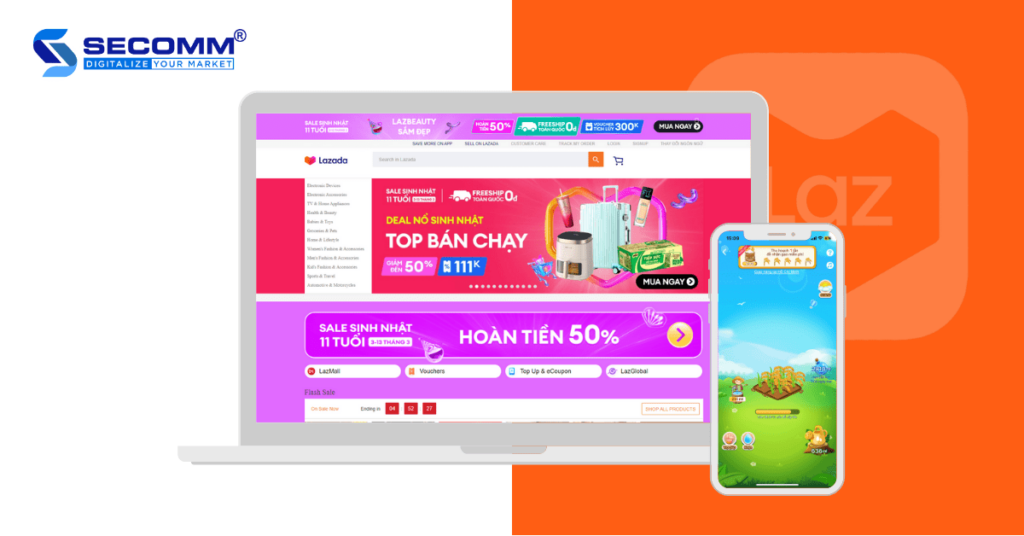
eCommerce Gamification strategy will help businesses boost sales if used effectively. When customers are engaged with the game, they are more likely to win discount codes and use them for later purchases which will make sales increase significantly.
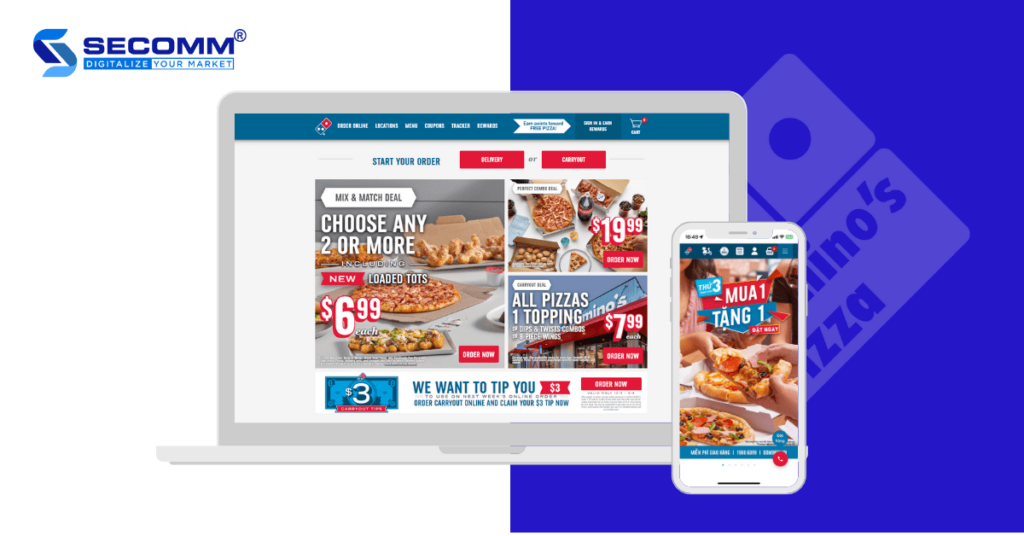
In 2021, Domino’s Pizza, one of the world’s leading pizza brands, increased its sales revenue by 30% with the help of Gamification. This company developed a game called Pizza Hero, in which users will make their pizzas on mobile devices. They can then click “Make an order” to order their pizza creation at a discounted price.
For brands, retaining customers and turning them into loyal customers is important. Gamification can help enhance brand loyalty by creating interesting experiences that encourage repeat visits. If a brand offers points or badges for reaching milestones, customers excited about earning rewards will be more likely to come back and play again. Whenever customers have shopping needs, they will recall and choose that brand.
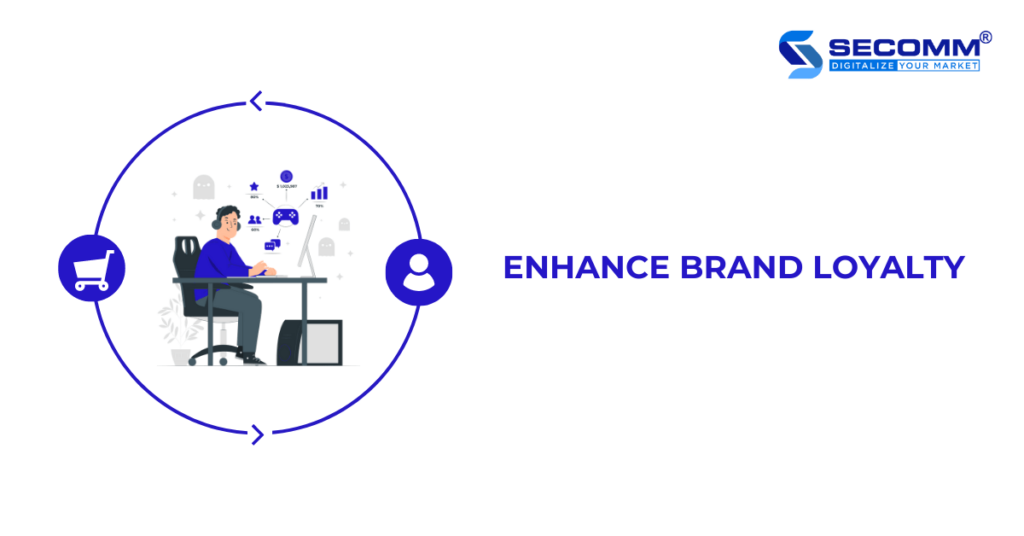
Although Gamification helps increase customer engagement, boost sales, and enhance brand loyalty, it still has potential drawbacks that eCommerce businesses should keep in mind before implementing it.
Developing amazing games requires creativity. Basic games like Quiz or Spin The Wheel are easy to create. These game experiences are too common among users so it’s unlikely to generate conversion. Hence, every business needs to get professional advice from creative agencies to design and develop engaging games that catch the eyes of users. However, it costs a lot of time and budget.
For example, creating a game with a variety of sound effects, images, videos, or personalized animated elements that enrich the user experience will increase the cost of implementation.
Among brands that have had success using Gamification, Starbucks would be the first one mentioned. Coffee brands usually offer vouchers or loyalty cards to encourage customers to return next time. Breaking out of the old rut, Starbucks developed a special game for its customers – “Flip the Cup”, in which the player chooses his favorite drink and could use one hand to flip the Starbucks cup. Each time, the player has 10 flips and each successful flip gets 10 points. Then, with the points achieved, the player can choose to play again or download vouchers. This exciting experience boosted engagement by 90% and the number of downloaded vouchers exceeded the targets by 110%.
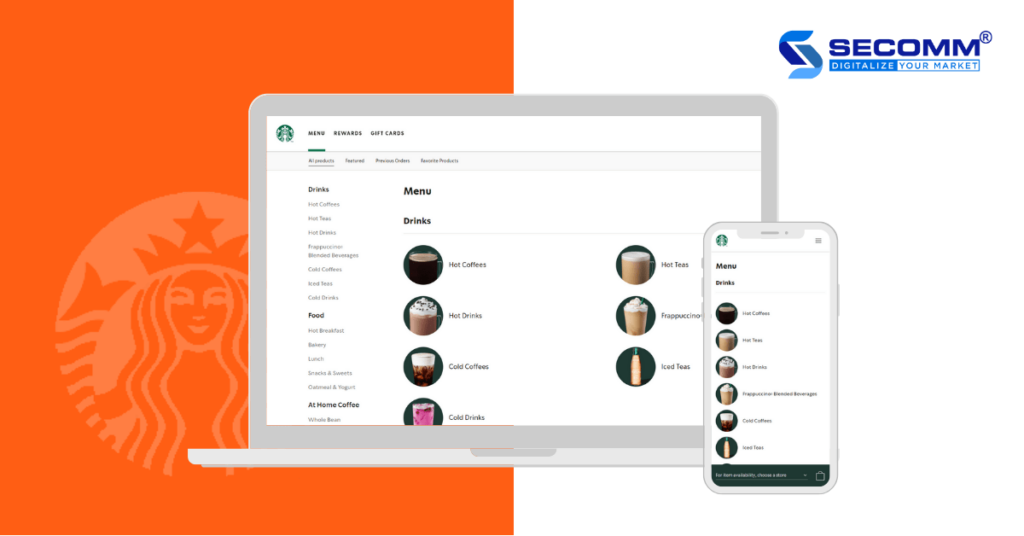
As mentioned above, Domino’s Pizza first entered the market in 2012, and that same year the company also launched Pizza Hero, the first game that gave pizza lovers a new way to order. In case they don’t know what to order, they can shake their mobile devices to ask the app for suggestions. Especially, users can customize their pizzas, find coupons, place orders at a nearby store, and track order progress right on their devices.
By using this strategy, Domino’s was able to boost online sales by 30% and achieve $1 billion in the US market alone. Pizza Hero received 140,000 downloads in the first two weeks after its debut, propelling it into the top 15 Lifestyle ranking on Google Play and the iTunes Store. Moreover, Pizza Hero and Domino’s Pizza both won the praise of Forbes, the most prestigious magazine in the world.

Gucci has taken eCommerce Gamification to a new level. Gucci Arcade is one of the fashion giant’s Gamification strategies to attract the attention of Generation Z. It offers customers amazing games to engage with such as Gucci Bee and Gucci Ace. This experience helps Guccis reach a wide pool of potential Gen-Z customers.
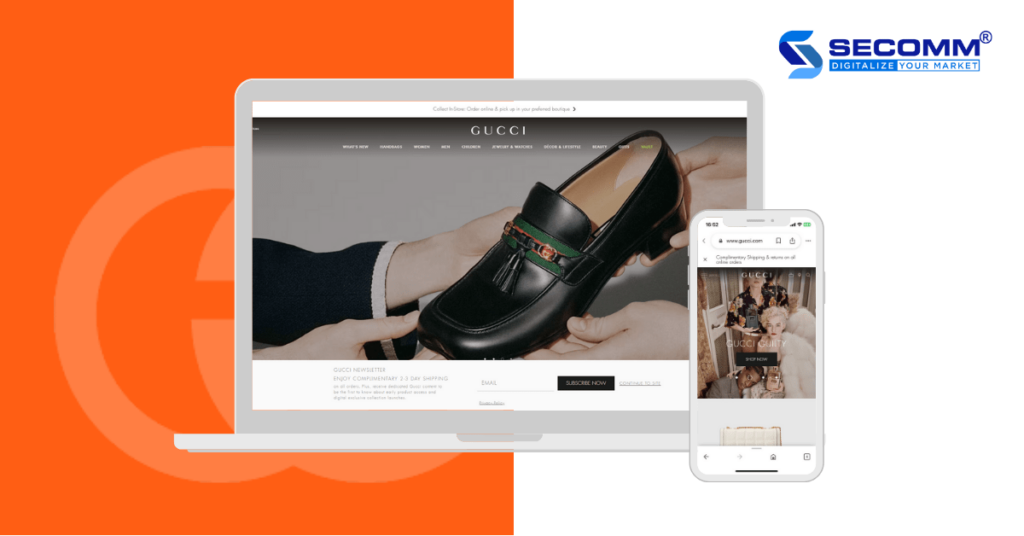
Gamification is a strategy that strengthens the development of eCommerce. It has become popular in the world as well as in Vietnam. Every business owner needs to seriously recognize its potential and plan for rapid implementation.
Talk to SECOMM today to get expert advice on eCommerce Gamification.
 4
4
 2,857
2,857
 0
0
 3
3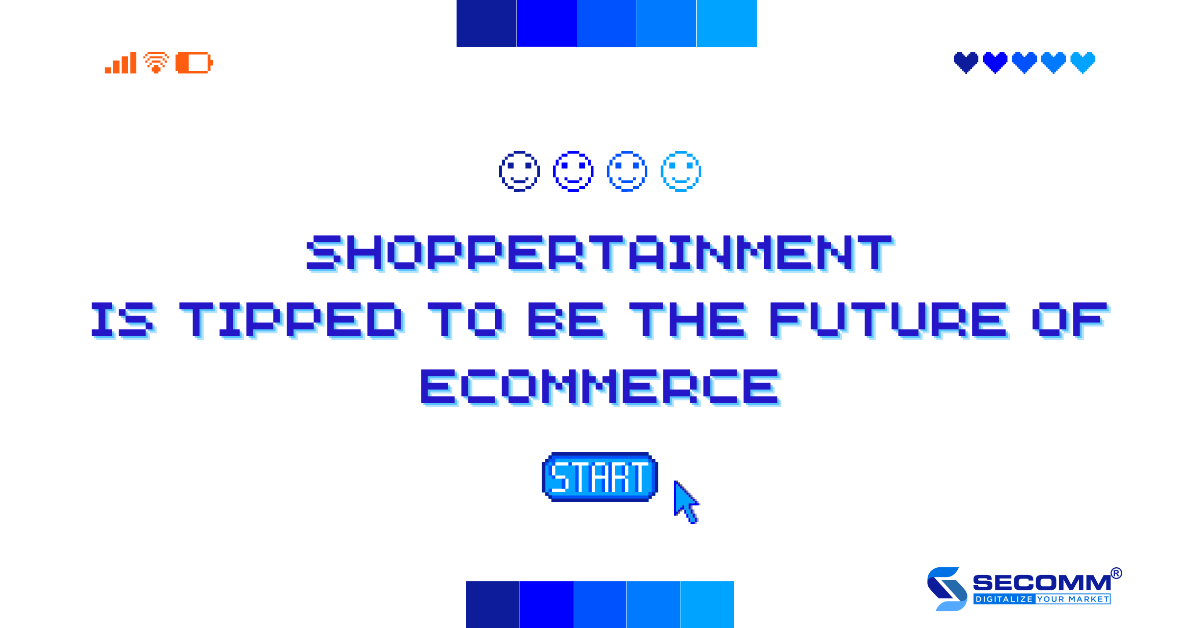
The Covid-19 pandemic not only encourages the tremendous growth of eCommerce but also helps shift consumers’ priorities from in-store to online buying. However, instead of just buying, consumers frequently prefer to seek out novel, inspiring experiences.
Therefore, every company should strive to implement the approach of shopping combined with entertainment (Shoppertainment) in order to improve marketing effectiveness and boost sales.
Shoppertainment is a combination of two elements “shopper/shopping” and “entertainment”.
Shoppertainment is described as “the provision of recreational or leisure facilities within or next to a retail store or shopping center, as part of a marketing strategy, which is designed to attract customers and stimulate purchasing” in the Oxford Dictionary (1990).
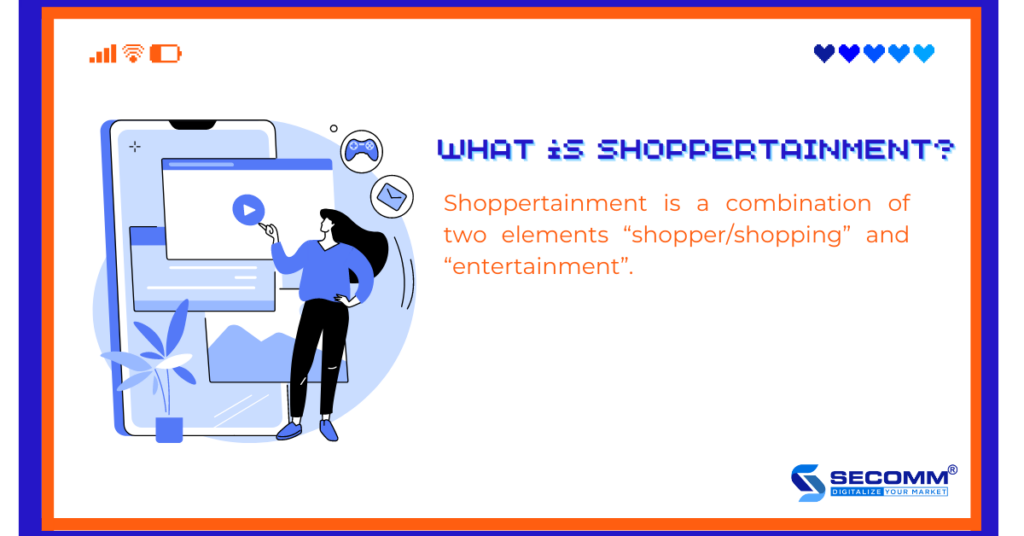
Many companies, notably IKEA, the biggest furniture retailer in the world, have used shoppertainment with success in the past. IKEA launched a campaign in 2019 called “IKEA nightclub – Tonight is to sleep” for 100 lucky individuals.
During this campaign, customers can partake in activities like manicures, massages, snacks, and tea instead of cocktails before spending the night in rooms with IKEA furniture that is soon to be released.
The brand has had remarkable sales success thanks to the campaign’s resonance in North America.
The shoppertainment trend, however, is no longer just restricted to stores or other physical locations thanks to the growth of eCommerce and digital marketing but has instead gained popularity and taken over online shopping activities.
In comparison to the prior definition, shoppertainment has been enlarged and changed. Shoppertainment is a trend that combines online shopping with entertainment, allowing buyers to engage with merchants in addition to purchasing products as usual.
In Vietnam and in the Asia-Pacific region, certain forms of entertainment-infused shopping are very common. Examples include live streaming, shoppable videos, and gamification.
According to the Vietnam eCommerce White Paper 2022, the size of the retail eCommerce market in Vietnam will increase from $11.8 billion in 2020 to $13.7 billion in 2021 and is estimated to reach 16.4 billion USD in 2022.
Meanwhile, the percentage of consumers shopping online on eCommerce websites is 78% in 2021, up 4% over the same period last year.
Because of the urgency, lack of options, and social isolation, the effects of the epidemic have actually contributed to a change in consumption tendencies from in-person purchases to online purchases.
Since that time, it has seen the quick decline of the conventional commerce model and the rise of eCommerce. By 2026, Statista projects that eCommerce sales will total $8.1 trillion.
Additionally, it is not surprising that consumers like shoppertainment. Although this combination is not novel, it promises to set the consumption trend in the years to come as eCommerce takes center stage.
The demand for online shopping will be higher there, and expectations for the best shopping experience—including both online shopping and fascinating experiences will also be higher.
Retail businesses around the world have seen a significant rise in sales during the outbreak by combining online shopping with live streams, entertainment videos, and video games to create real-time digital interactions with customers.
For instance, Taobao Live, which Alibaba introduced in 2016, saw a 150% surge in sales in 2020 when the epidemic first appeared in China.
“Shoppertainment is now a basic expectation. You really have to leverage engaging tools so the shopper gets to learn about the product, its superiority, and has fun along the way,” notes Alex Vogler, senior director and head of marketing, eBusiness, Procter & Gamble (P&G) Asia, Middle East, and Africa.
The Covid-19 pandemic has had a significant negative impact on the human psyche, causing issues including depression and anxiety. On the other hand, a portion of the populace said that the social connections they were unable to have prior to the epidemic significantly improved their psychological well-being.
People need to connect with the community and others like them more than just for amusement. Brands have therefore concentrated on improving the consumer experience by transforming personal experiences into shared ones that bring communities together.
As an example, consider the hashtag #TikTokMadeMeBuyIt. Through the TikTok platform, users can easily and amusingly share their shopping experiences, resulting in videos going viral and receiving more than 4.5 billion views.
Shoppertainment will result in emotional and impulsive purchasing decisions since it emphasizes entertainment and connection. According to a recent TikTok research:
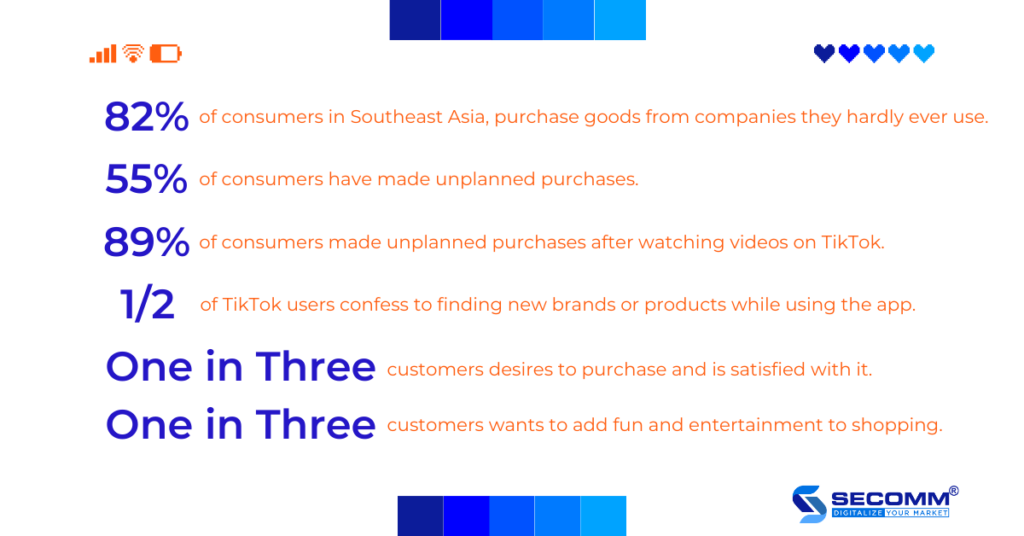
The studies mentioned above demonstrated the enormous influence that social networks and online shopping trends have on consumer decisions.
Because of this, Vietnamese retail companies have prioritized shoppertainment in their marketing plans.
Customers demand a more social and engaging online shopping experience, as well as the ability to connect and converse with one another while buying, which is the reason for any of this.
In recent years, both buyers and sellers in the Asia-Pacific (APAC) area have grown accustomed to live selling. Live selling is less common in the US and Europe than it is in APAC, but businesses there are nonetheless keeping an eye on this trend.
For instance, AliExpress initially introduced the live selling feature in France in May 2020, and since then, more than 3,000 live programs have been launched, with the involvement of more than 100 vendors.
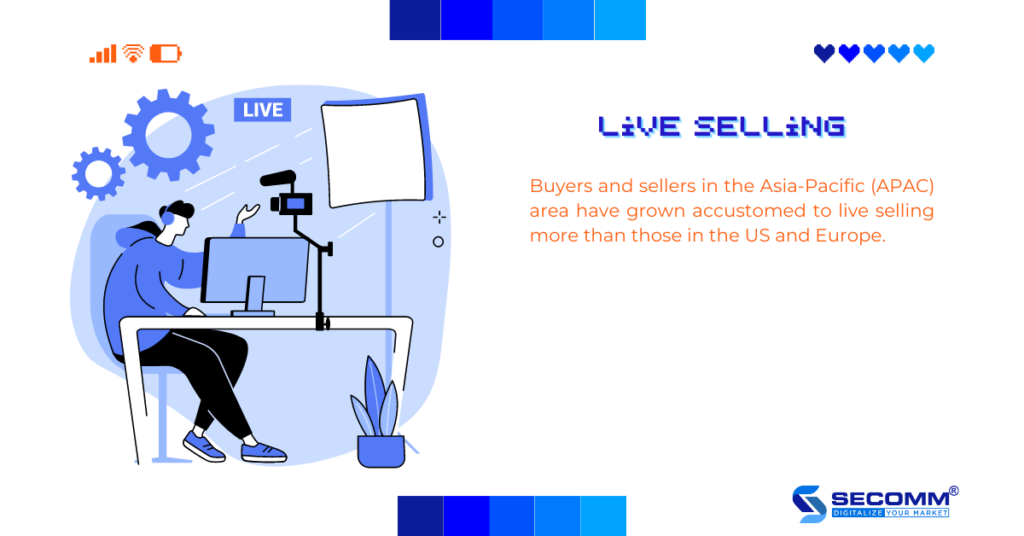
The combination of sales, interaction, and entertainment makes this one of the top social selling strategies. Customers can interact with vendors directly, view actual product photos, and make decisions by pushing their shopping emotions.
Plus, the engaging social interactions that take place throughout live streaming help retailers make an impact on customers, resulting in a high return rate.
Due to the growth of the Shoppertainment trend and the effectiveness of live streaming in generating sales through social networks, eCommerce marketplaces have started to put more of an emphasis on investing in producing engaging entertainment material for users on their apps, particularly through live streaming.
The customer buying experience is improved by several well-known live stream channels, like TaobaoLive, LazLive, Shopee Live, TikiLive, etc.
These companies have the resources to develop this feature for themselves, but lower-budgeted companies can still try the live-selling concept by integrating Facebook or YouTube live stream with an eCommerce website.
Live-streaming videos will be effectively replaced by shoppable videos. One of the joys of using this type of video is that companies may produce videos in their own distinctive styles that quickly introduce customers to their products, explain how they operate, and demonstrate how to use them. These videos can be attached to an eCommerce website. Users can always click the product link in this kind of short video to find out extra details or to make a purchase. The short-form video has overtaken popular platforms like TikTok, Instagram Reels, and Youtube Shorts as the go-to method for branding, cultivating customer trust, and influencing purchasing decisions.
83% of people, according to Nielsen study, prefer watching videos of advertisements to GIFs or text. Short-form videos have gained popularity as a result of global digital transformation and consumer preference, and many brands now opt to use those as part of their video marketing strategies due to their useful advantages, which include the following:
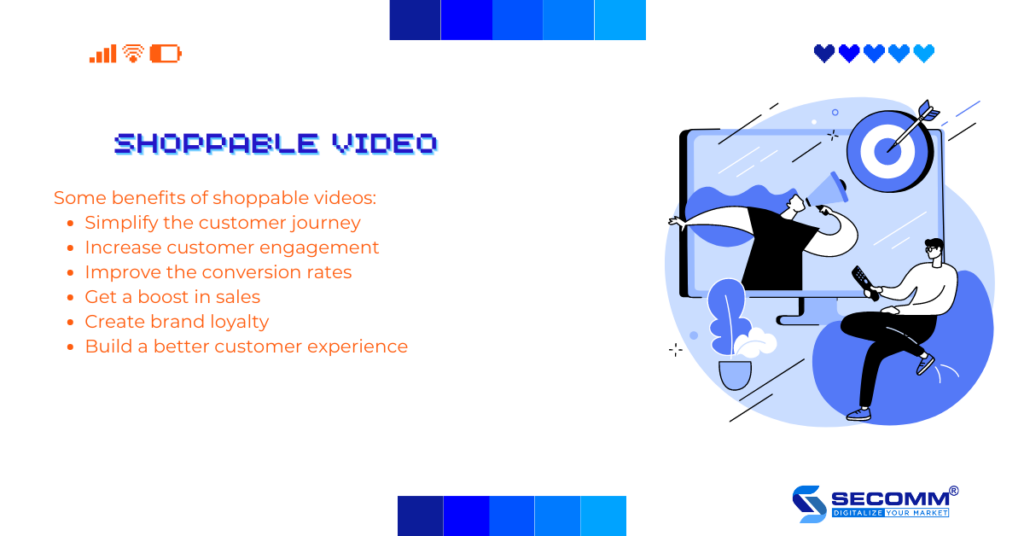
Gamification or Gamification Marketing is the skillful incorporation of a video game’s mechanics into promotional operations in a unique and impressive method to meet marketing objectives.
Gamification’s primary advantage, similar to live selling, is engagement, which keeps people on the site, drives conversions, and boosts sales.
Users are actually more likely to return for more shopping if a business can convince them that engaging with it is an interesting experience rather than a transaction.
A study by Bazaar Voice demonstrates the impact of gamification on businesses’ marketing strategies as follows:
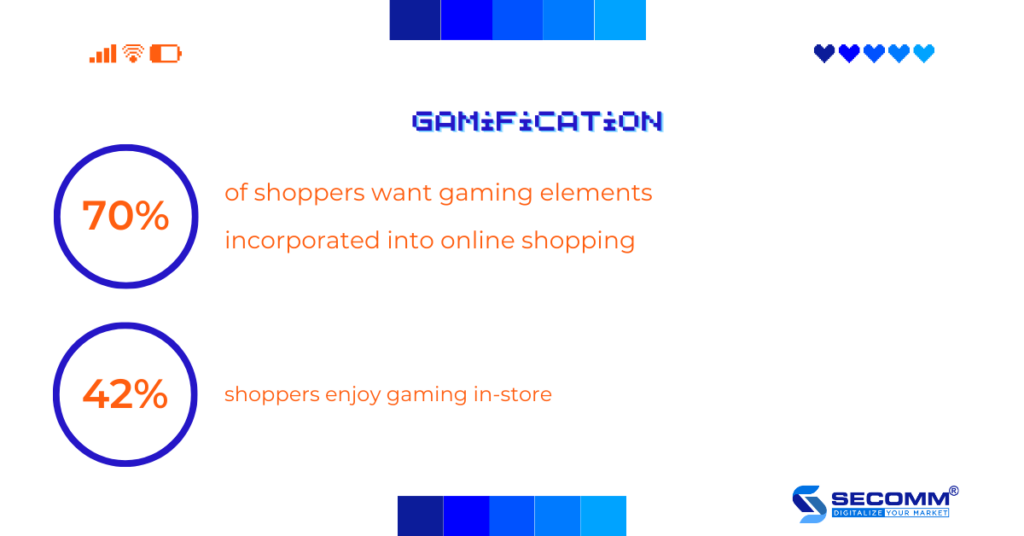
For instance, take Bajaj Finserv’s Indian financial company’s Gamification Marketing campaign. The game was created by this firm to encourage people to use its travel loan services.
Users will complete tasks and respond to questions about their preferred travel destinations. Customers adored the campaign, and it immediately trended on Twitter with more than 75 million impressions.
Thus demonstrating Bajaj Finserv’s efforts to develop engaging experiences and provide them to customers in line with its marketing strategy. Brands attract more potential customers, enjoy the better engagement, and increase conversions as a result of the viral impact.
Shoppertainment has been around for a while, but it wasn’t until Covid-19’s effect that this trend truly took off. Businesses should take advantage of this trend to improve the online shopping experience for customers and increase sales in the era of eCommerce.
Due to the growing demands of customers for a better shopping experience and the ongoing changes in the market, achieving this goal is difficult and labor-intensive. As a result, companies must work with expert agencies to plan the proper eCommerce deployment from the start.
With many years of experience in successfully implementing eCommerce for many customers in many countries, SECOMM specializes in providing consulting services with comprehensive and professional eCommerce implementation solutions.
Contact SECOMM today for free support and advice.
 3
3
 5,900
5,900
 0
0
 1
1Subscribe to get the latest eBook!
Hotline